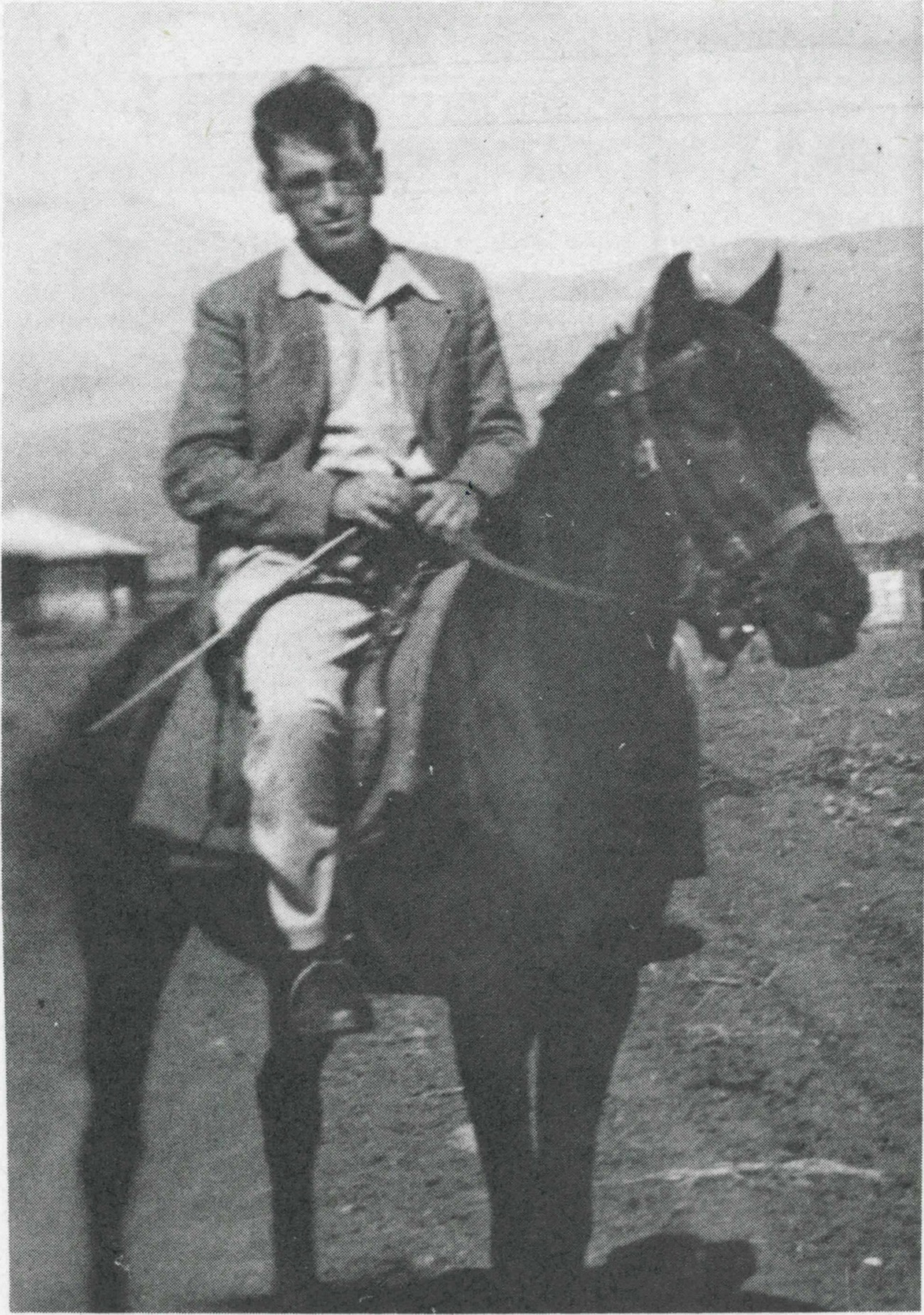Radio messages
30/8/1948. To Binyamin Shapira, from Zakam: Sa’id. Sa’id. Din. Din. Wa’Kamal Kamal. Effendi. Wants to meet you. Police. Immediately. When and where?
13/5/1948. To Binyamin Sapira, from Arieh: Moshe from Kaf Gimel [Kfar Giladi] says Kamal is waiting at home; phone him as soon as you can. Urgent.
From: Amir archive, File no. 3, War of Independence, 1948-1949
Binyamin Shapira is my grandfather.
Newsletter of the committee for relations with the neighbors, Hula Valley [1]
Binyamin Shapira writes in July, 1942
There were various reasons that the person who became the “leader” [2] in the Hula gained his position – not because of his wealth or that his origins were grander than those of other local effendis. The “leader” was the principal mediator involved in land sales, on the one hand, and in the “gom” [blood feud] between Kfar Gil’adi and the “leader,” Kamal Effendi, which had begun during the time of Tel Hai and raised doubts and uncertainty about our relations with him. The “leader” started to behave as if he owned the Hula – his hand was everywhere. The authorities ask his opinion about everything. Many envy his rule. Amid all this turbulence, the question arises of what the position should be of the Jews in the Hula given the local conditions? We’re becoming stronger in the Hula Valley; the opportunities for enlarging our settlements in the future are increasing. If an agreement could be reached between the “leader” and Kfar Gil’adi, we’re certain that the veteran inhabitants of Kfar Gil’adi could serve as a counterweight to him and his machinations. We must ask our institutions to take care of it once and for all. I’m writing this to open a discussion that will lead to decisions and actions.
A history book
Kamal Hussein, from Khalissa, who killed Yosef Trumpeldor, and later sold land to the Jewish National Fund - and was an agent of the Hagana’s Intelligence Branch and of Da’at, until he was murdered in 1949 by a Syrian intelligence agent – came to Binyamin Shapira in March, 1949 to report on the refugee’s state of mind:
“All the refugees in Lebanon want to return. None of them have settled down; they’re not allowed to work, particularly not agricultural work. The Red Cross organization in Lebanon which is staffed entirely by Lebanese officials is stealing all it can; very little reaches the refugees.”
[Gelber, Komemiut veNakba, 2004, pp. 360-1]
Binyamin Shapira Memorial Booklet
Binyamin was a noble figure, educated, rooted in the Yishuv and in the movement, a man of conscience and values, a man of letters, a scholar, self-sacrificing, persistent, who believed in coexistence and worked to bring it about. He left many friends, Jews and Arabs, in Israel as well as in Syria and Lebanon. Binyamin, of blessed memory, wrote a unique chapter in the history of the Hula Valley settlements.
[Yehoshua Khabushi, Binyamin Shapira Memorial Booklet, Kibbutz Amir, 1978]
Radio messages
18/3/1948 To Mano Friedman, from Binyamin: The family of the Haj from Du’ara asks not to damage their home. Otherwise they’ll leave the village. Reply whether that’s possible, and whether Kfar Szold has been warned. Information from Mustafa. When the rains stop, the gangs will focus their activities on the main road along the Hula’s western ridge. They’re preparing to attack settlements there. Shashikli is now with his family in Aleppo.
18/3/1948 To Eran, from Palti: After consulting with Binyamin, there’s only one possible response to the murder (in) Kfar Blum. To kill one or two people from Salihiyya, and stop there. That’s not likely to lead to further complications. Awaiting reply.
29/4/1948 To Amalya, from Binyamin: I won’t be home this evening. I’m remaining in Rosh Pina.
[Amir archive, File no. 3, War of Independence, 1948-1949]
Amalya is Binyamin’s wife, and my grandmother
A letter from Amalya to Binyamin
Hello Binyamin! Yesterday Shimon gave us your letter and the books; we were very happy. The little one immediately picked up the book and began to carry it around, and I could hear her talking to herself: “Sweet daddy, sweet daddy, he sent me a book.” The room’s a little empty; I’m no longer used to coming home and not finding you – it’s a little sad…”
Loving kisses from the three girls – Yours, Amalya.
February, 1951
“The little one” is Dorit, my mother.
Document
Top secret/GHQ/Operations Branch/Intelligence
RE: Regional Intelligence Officers
As of 1.8.1948, Binyamin Shapira has been appointed Regional Intelligence Officer for the Eastern Galilee and the Kineret bloc.
Signed: Director, Intelligence Operations
From the newsletter
On 1/1/1950, Binyamin Shapira ended his military service, returned home and began to work driving a tractor.
[“Ba’bayit,” Kibbutz Amir newsletter, 5/4/1951]
A memory
The house was always filled with people. They had guests all the time. He had many, many friends from his work with the Arabs and in the party. Amalya baked cakes and cookies. I was shy. I’d sit outside and sometimes even remained in the children’s house because I was embarrassed. Until I was 5, Binyamin was never home. He was in the war. Worked with the Arabs. He didn’t even come home when I was born. He always talked about how he hadn’t come home, but had sent a bouquet of red roses. But he was also very fatherly, warm. People didn’t hug much then, but when we walked together he’d rest his hand on the back of my neck. He’d come to cover us – the girls - at night.
[From a conversation with Nina, Binyamin and Amalya’s oldest daughter, my aunt, 4.5.2012]
Radio messages
2/6/1948 14:00 Districts and company commander report: Don’t allow any Arabs to return to the Hula. Open fire on them all. Return fire in case of attack.
11/6/1948 23:00 To Haim, from Khuliot, and Yoel, from Amir, from Efrayim: Send more people out in the morning. A mobilized squad. Salihiyya. To guard the tractor that will demolish the village.
9/9/1948 20:45 To the Amir and Lahavot regional commander, from Khuliot regional commander: Demolition of the villages will continue until further notice. The work is being done for pay. Send one person to Salihiyya tomorrow at 06:30 exactly. Confirm in your next radio message.
[Amir archive, File no. 3, War of Independence, 1948-1949]
Language
Binyamin, who had a wide-ranging education, became interested in the area. He learned Arabic and worked at it until he was fluent and could read and write. At the same time he came down with malaria, as did the others, and divided his time among attacks of malaria, studying and working. He struggled with all three. He suffered more from malaria than did any of the others, and had 27 attacks.
Later he began to learn about the area in detail, about its problems. Armed with the language and his local knowledge, and his sincere desire to help the inhabitants, Binyamin began to wander around the villages, cross the border, develop friendly relationships with the villagers, help them with their many problems. The villagers began to see him as a true friend, came to him for advice and to ask for his help. He devoted most of his time and energy to them.
[Binyamin Shapira Memorial Booklet, Kibbutz Amir, 1978]
A chat
25.5.2009. Hadas and I
Hadas: Tell me, do you know someone from Amir named Binyamin Shapira?
Me: Yes…sure I do. He’s my grandfather
Hadas: Wow! What a gas! Can I talk to him?
Me: Unfortunately, he died a long time ago. Why?
Hadas: I’m working on massacres in the Galilee; his name is mentioned in Gelber’s book in connection with a massacre.
Me: Wow. That’s wild.
Hadas: Absolutely…
Hadas: Could you help me locate the source of those documents? Maybe if you write to Gelber as Binyamin’s granddaughter he’d be more willing to help?
Me: Yeah, sure, no problem.
Hadas: I hope we find something interesting…Tomorrow I’ll be at the IDF archives. Let me know whether he gets back to you.
Reply
Dear Amaya,
Most of the documents relating to Binyamin Shapira from that period are found in the archives of the Intelligence Branch, which were recently transferred to the IDF archives. That’s what the code “PA” (“Private Archive”) means. The 15 March 1949 report is also there. I made more extensive use of those documents even before Komemiut VeNakba, in a book called Nitzanei HaHavatzelet, about intelligence activities during the War of Independence. The book isn’t classified, but it appeared only as an internal publication of the intelligence community. It might be possible to locate it on one of the web sites that sell second-hand books. With respect to the document itself, I think some of the material from 1948 that was transferred from the Intelligence Branch archives is open to the public; you’ll have to ask them.
Sincerely,
Yoav Gelber
25.5.2009
A book
Binyamin Shapira from kibbutz Amir, the Northern Region intelligence officer, reported to his military superiors on cases of massacre, rape and looting that had occurred in the villages of Salaha, Sufsuf, Jish and Hula. He noted the number of people who’d been massacred in each village, added that there had been eyewitnesses to all the incidents, and said that if the incidents were investigated evidence would be found.
[from a letter written by Binyamin Shapira to Eliezer Be’eri, 8.11.1948; Gelber, Komimeut VeNakba, 2004, p. 352]
Binyamin Shapira Memorial Booklet
He made connections, moved up, advanced, until he held the highest position in the area and was chosen to be the senior mukhtar. How surprising it was that a young man, born in Poland, not in Palestine, and, moreover, a member of HaShomer HaTzair, achieved that position in a region where veterans of “HaShomer” held undisputed sway. He didn’t look like an Arabist, nor did he absorb the common mentality of those who dealt at that period with Arab matters. In fact, the “Arabist” doctrine prevalent then in HaShomer HaTzair was very foreign to him. That’s what made him unique, kept him from “going native” and allowed him to operate objectively.
In all he did, Binyamin Shapira worked honorably and courageously on behalf of our struggle and knew how to convince the authorities that his claims were just and made them abandon their hostile plans. Quiet, moderate, patient and focused on his tasks, he acted and surprised everyone, particularly those who expressed their amazement that he was chosen for that position, one he attained by devoted effort that continued day and night.
Written by Misha’el Shaham
[Binyamin Shapira Memorial Booklet, Kibbutz Amir, 1978]
Document
To Tenne (A)
11.6.1948
RE: Movement of refugees attempting to return to their villages
On Friday morning, 11.6.1948, the Hukkuk observation post saw cars driving toward Migdal at about 10 AM. It turned out they were Arabs from Ghur Abu Shusha trying to return to their village with their families and belongings. The intention may be to try and return the villagers to where they’d lived so they can serve as a base for Fauzi al Kaukji’s forces.
A company of ours moved out at noon to chase them away. Additional information isn’t available yet.
From Dori.
“Dori” was Binyamin Shapira’s code name in the intelligence branch.
Memo regarding the Hula Valley
Prepared by: Binyamin Shapira
The geographic situation: The Hula Valley is a long, narrow region lying between the Syrian and Lebanese borders on the country’s northern border.
The rivers flowing through the Hula Valley helped create the same conditions for agriculture throughout the area and were crucial to the way of life that developed among its inhabitants, one which differed from that of the inhabitants of the exposed hills surrounding the valley. Lake Hula and the endemic malaria also had, and continue to have, their effects.
The inhabitants of the Hula Valley: The population numbers more than 120,000 (Arabs), scattered among dozens of villages. Most of them belong to the G'oarni. They live among the swamps, Sunni Moslems, extremely primitive, in whose veins flows, according to tradition, the blood of Negro slaves who’d been brought to the Hula hundreds of years ago to work in the cotton plantations. They’re reputed to be cowards.
Hula Valley agriculture: All the land in the Hula can be irrigated, and is irrigated by the Arabs. Land distant from water sources is difficult to irrigate; it’s necessary to construct public water channels shared by a number of villages and distribute the water among them. The problem has become more serious since the advent of Jewish settlement. The Jews use very large amounts of water to grow vegetables. The Arabs aren’t used to permanent arrangements for distributing water, and don’t have such arrangements. They’ve also begun to damage Jewish irrigation installations which use too much water.
This is a significant economic and political problem. Until the Hula is drained, or until permanent and acceptable arrangements are made for irrigation, and given the expansion of Jewish settlement, there won’t be a solution. It will cause many future difficulties and ruin the relations between the two groups.
[The memo is undated. It was probably written ca. 1943-1945]
A memory
Father worked a great deal, particularly in the area of Jewish-Arab relations. He wanted there to be coexistence. He worked as a teacher of Arabic in Einot Yarden. Once he took my class to Kafr Yassif for a week. Each of us was hosted by a family, lived with them for a week. We spoke only Arabic. One of the children of my host family wanted to correspond with me. When my father found the letter in the mailbox he forbade me to continue the correspondence.
-Why?
-I don’t know. We didn’t ask questions then. I didn’t ask. We didn’t talk as much as they do today. I accepted what they told me. We didn’t argue.
[A conversation with Nina, my aunt, Binyamin and Amalya’s oldest daughter, 4.5.2012]
A clinic
Like the movement, he hoped to create in the area an extensive program of Jewish-Arab cooperation, and devoted himself, heart and soul, to trying to establish model health projects for the entire region, a plan whose promoters included his friend , Prof. Gid’on Mar, and Dr. Y.L. Magnes. It was a tall tree with many branches in the Galilee’s landscape whose roots were in Amir [3]. His kibbutz was the source of his strength.
By: Eliezer Be’eri
[From the Binyamin Shapira Memorial Booklet, Kibbutz Amir, 1978]
Minutes of a meeting
From the meeting of the Bloc Committee for Relations with the Neighbors, 1945
At its annual meeting, the bloc chose the following members of the Committee for Relations with the Neighbors: Moshe Aliovitch, Eliezer Kroll (Kfar Giladi), Ayzik Levin (Dafna), Dov Reicher (Dan) and Binyamin Shapira. Binyamin was chosen to head the committee.
An action plan was developed at the first meeting.
1. To hold a monthly meeting of those guarding the fields and the mukhtars that will be devoted to: a) Learning about the legal issues which are important to know for their work. b) Learning about the Arab problem. c) General discussion of what’s happening regarding the committee’s ongoing work.
2. Visits to the settlements at least once a month to learn about the issues at each place. It was suggested that the mukhtars keep a log of their activities.
3. Learning Arabic: After Y. Habushi stopped teaching he was replaced by comrade Anatbi, who’s already teaching in Menara and Kfar Giladi. He began inquiring about teaching in other settlements and preparing an appropriate plan.
It was also decided to give lectures in the settlements about the Arab problem.
Recorded by: B. Shapira, v. 2, p. 204, February, 1945
Eulogy
Binyamin Shapira’s funeral, 5.7.1978
I knew him during the 1940’s and 1950’s, when he’d visit the villages in the Hula Valley and deal with solving complicated problems. He always found a way to overcome the difficulties, and his solutions were accepted by all the parties. He was soft-spoken and had a very strong personality. He was known and accepted by everyone; all were equal in his eyes – real brothers. I accompanied him both in his civilian and his military undertakings. He faced many dangers without fear or dread. He also knew how to support those who worked with him and risk his life for them. Those of us from Wadi Hamam [4] will never forget the help he and other friends gave us when we needed it.
The speaker: Yusuf Muhammad Khal’yuti.
[From the Binyamin Shapira Memorial Booklet, Kibbutz Amir, 1978]
A quote
I gathered the Jewish mukhtars who had connections with Arabs in various villages and asked them to whisper to some of them that a large Jewish reinforcement force had reached the Galilee and was preparing to destroy all the villages in the Hula. Suggest to them, as a friend, to flee while there was still time. And the rumor spread throughout the Hula Valley that it was time to flee. Tens of thousands fled. The trick worked perfectly.
Yigal Alon
[From: Morris, The Birth of the Palestine Refugee Problem, 2004, P. 251]
Minutes of a meeting
From the minutes of a meeting discussing whether to expand the task of the committees dealing with relations with the neighboring Palestinians to include gathering information about them:
Binyamin: Notwithstanding the different approaches to the Arab question, there’s no denying the reality that we’re neighbors and must develop good neighborly relations with them. But not based on bakshish, as has been the case so far. Will we learn how to rejoice on their festivals and mourn their sorrows? To do so requires learning Arabic well enough to speak, write, and read a newspaper. Much educational work is necessary with respect to the Arab question, including learning about the problems of the Arab world surrounding us.
[From: Newsletter of the Committees for Relations with the Neighbors in the Hula Valley, no date, apparently the beginning of the 1940’s].
From the diary of Levi Ashdi, a member of Kibbutz Amir
Thursday, 27.5.1948: Units of the “Yiftach” brigade had already carried out a daring action on May 4. In a surprise attack they destroyed the enemy forces in the region between the Sea of Galilee and the Hula Valley. The Galilee was once again connected to the rest of the country. But the Hula Arabs remained in their villages. Now, before announcing the establishment of the state, there was apprehension that when the Syrians invade we’d be faced with a war on two sides, front and rear. Consequently, an order was given on May 12 to move the inhabitants of the Arab villages away from the area temporarily, to Syria, and they’ll return after the fighting has ended.
But at the same time that Binyamin Shapira was arranging a secret meeting with mukhtars from the area, the latter had already received orders from those in charge to leave their villages and go to Syria. While Binyamin is wondering how to present the demand, they informed him about the order they’d received. And in fact, the following night all the Arabs left their villages and crossed the border to Syria. They had no doubt they were leaving for only 2 or 3 days, because they didn’t realize the Jews would confront the brave Syrian army. That’s why the mukhtars asked Binyamin at that nighttime meeting to keep their villages and property from being damaged, and they’d repay us when they returned after the Syrian victory.
[From: Kibbutz Amir archive]
A book
An analysis of the circumstances leading to the flight of the Arabs from the Hula Valley, based on IDF intelligence sources, indicates that whatever effect the Palmach’s whispering campaign had, a much greater effect was the traumatic experience of the fall of the “capital,” Safed… The flight was actually the result of a combination of various factors and reasons which affected each village differently: orders villagers received from irregular Arab fighters (and perhaps also from Syria); harassment and attacks by Jewish forces; fear of attack by the Haganah; the whispering campaign; and fear of being caught in the fighting between the two regular armies.
[From: Morris, The Birth of the Palestinian Refugee Problem, 2004]
Encounter
March, 2012. I read Paper, Rock by Tomer Gardi, where I meet my grandfather:
“[...]Fewer than ten days after the meeting at which the account of this rape was written, another meeting was held. Tuesday, 10 August 1948, Kibbutz Kfar Giladi’s cultural center. Among participants in the previous meeting who also attended this one were Emanuel Friedman and Moshe Eliovitch. I learn about it from a report sent by Emanuel Friedman, the official responsible for minority affairs in Safed and in the district, to his superior, the Minister of Minorities, Bechor Shitrit. Also present at the meeting, in addition to Eliovitch and Friedman, are Hunin’s two mukhtars, Shakr Faras and Muhammad Wakad, and Muhammad Alsha’ar and Muhammad Barjao’wi, two other village notables. I read about this meeting in a document deposited in the Israel State Archives in Jerusalem, a digital copy of which I retrieve from my portable computer’s virtual memory. ח3 – 2564/9, Areas captured by Israel. Other participants in the meeting included Rafael Abo, from the Ministry of Minorities office in Safed, and Binyamin Shapira, from the military intelligence unit.
The meeting, Friedman reports to Bechor Shitrit, was held at the request of the notables from Hunin, who’d submitted their request in writing to Moshe Eliovitch. Friedman writes that the Arabs announced they were there representing themselves and the Arabs of their village in order to renew the good relations that had for years existed between them and their Jewish neighbors. And later: Their principal hope is to live as a loyal minority in the state of Israel and accept all the responsibilities which the state will impose on them, and enjoy all the rights enjoyed by all citizens. They believe in the Jews’ justice; they strongly desire to be freed from the yoke of the tyrannical Arab regime that knows no restraint, he writes, from which they’ve suffered for so many years, particularly since they’re Shi’a.
Did Muhammad Alsha’ar , Shakr Faras, Muhammad Wakad and Muhammad Barjao’wi know as they sat opposite Eliovitch and Friedman, trying to negotiate the future of their village, that Israeli soldiers had raped and murdered four of its women? Did the Arab men know that some or all of the Jewish men facing them knew what had happened to the women? A question whose answer is apparently undocumented and can be found only in oral histories.
A lecture
Three years ago I gave a lecture about the nakba in the kibbutz where I grew up, the same kibbutz of which Binyamin was a founder and in which he lived till his death – Kibbutz Amir. The audience was made up of kibbutz members of all ages. One was from Binyamin’s generation. During the lecture, as he repeatedly extolled the fact that he’d been a Palmach fighter and doubted my reliability, as well as commenting on my “naivety” in supporting the return of the refugees, he pulled out the winning card: “And what would your grandfather have said?” That question is still with me. My sister answered him surprisingly quickly – “He would have been proud of her.”
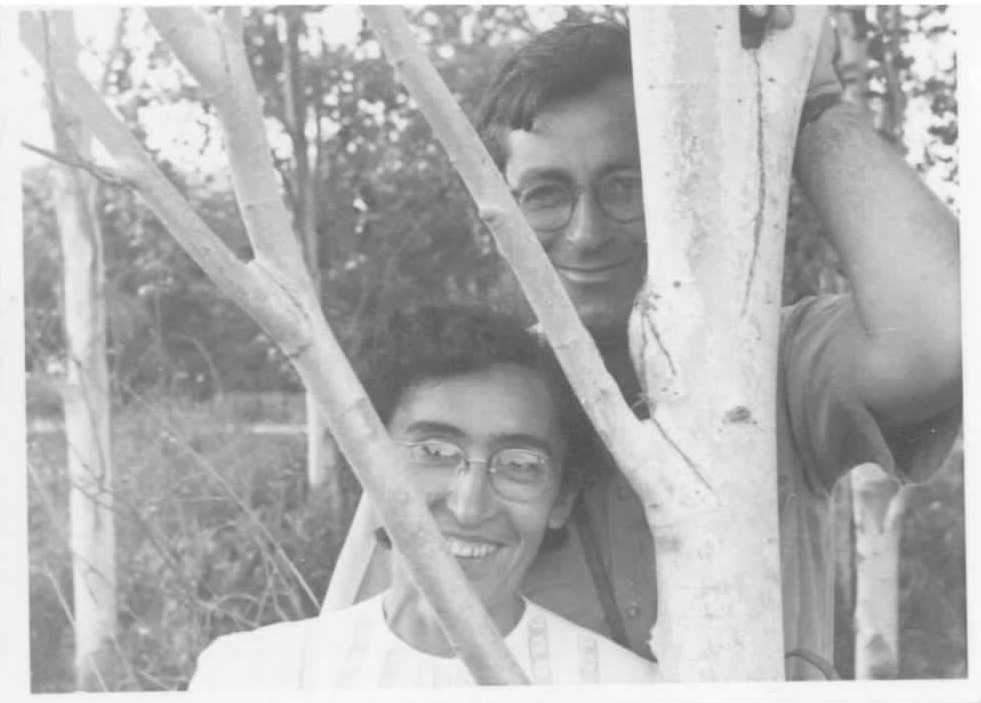
בנימין ועמליה שפירא, סבים שלי / Binyamin and Amalya Shapira, my grandparents
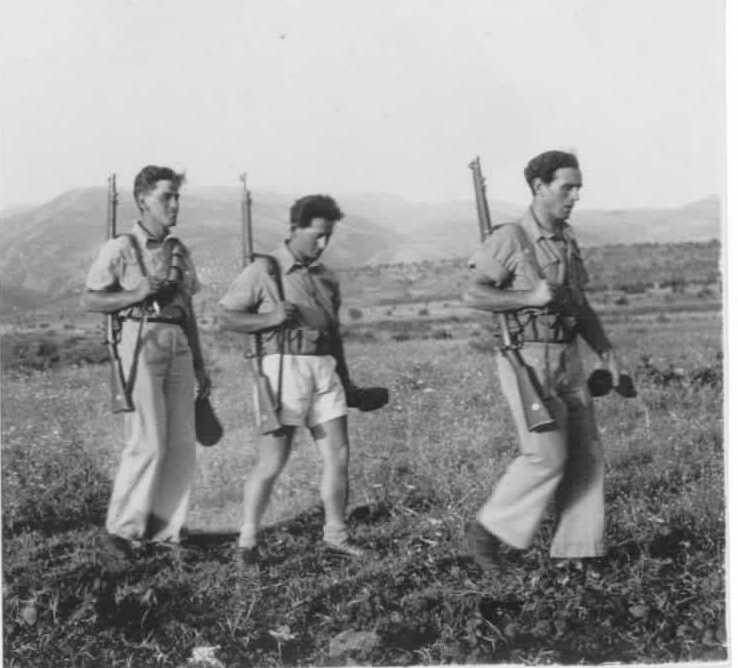
בנימין (משמאל) בשדות עמק החולה / Binyamin (left) in Hula valley
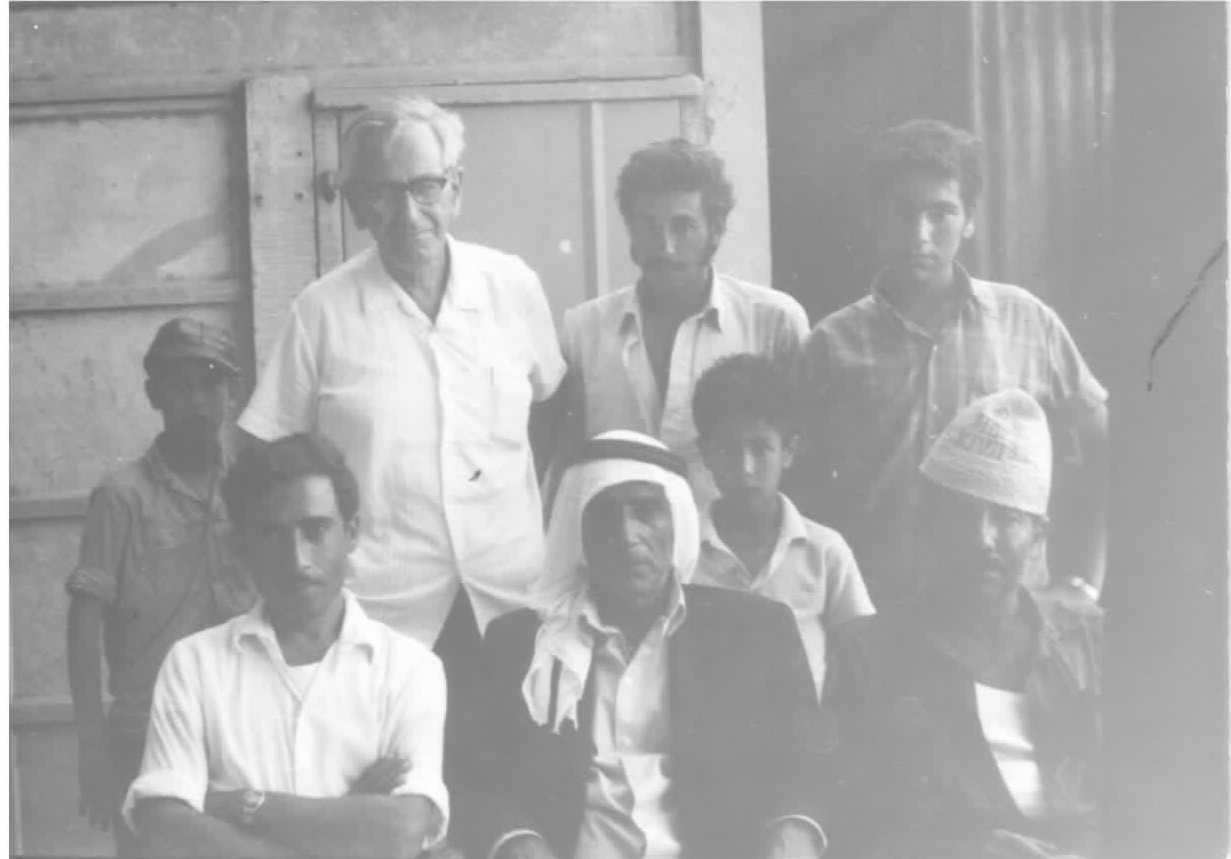
בנימין שפירא במרכז, לא ידוע עם מי והיכן / Binyamin Shapira in the center, unknow with whom and where
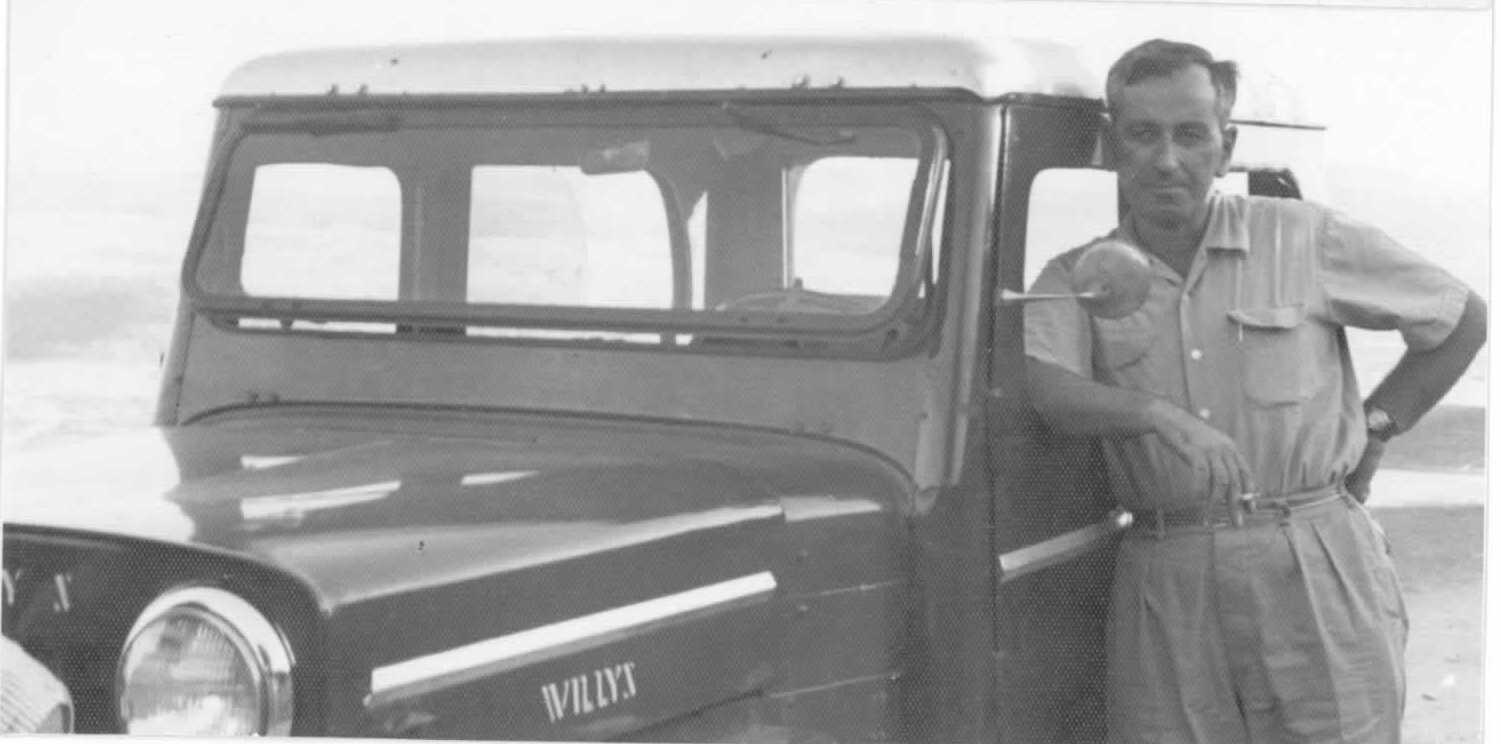
בנימין שפירא / Binyamin Shapira
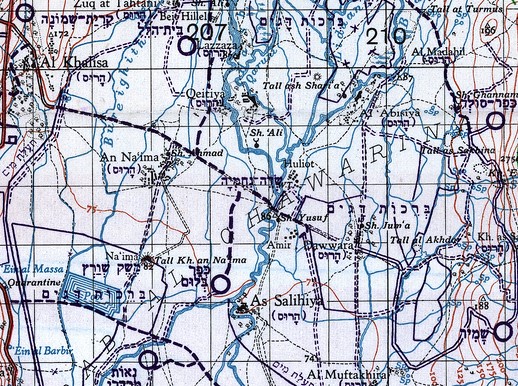
מפה ישראלית של עמק החולה 1956. מבוססת על מפה בריטית מ 1942 / IIsraeli Map of Hula valley 1956 based on British map 1942
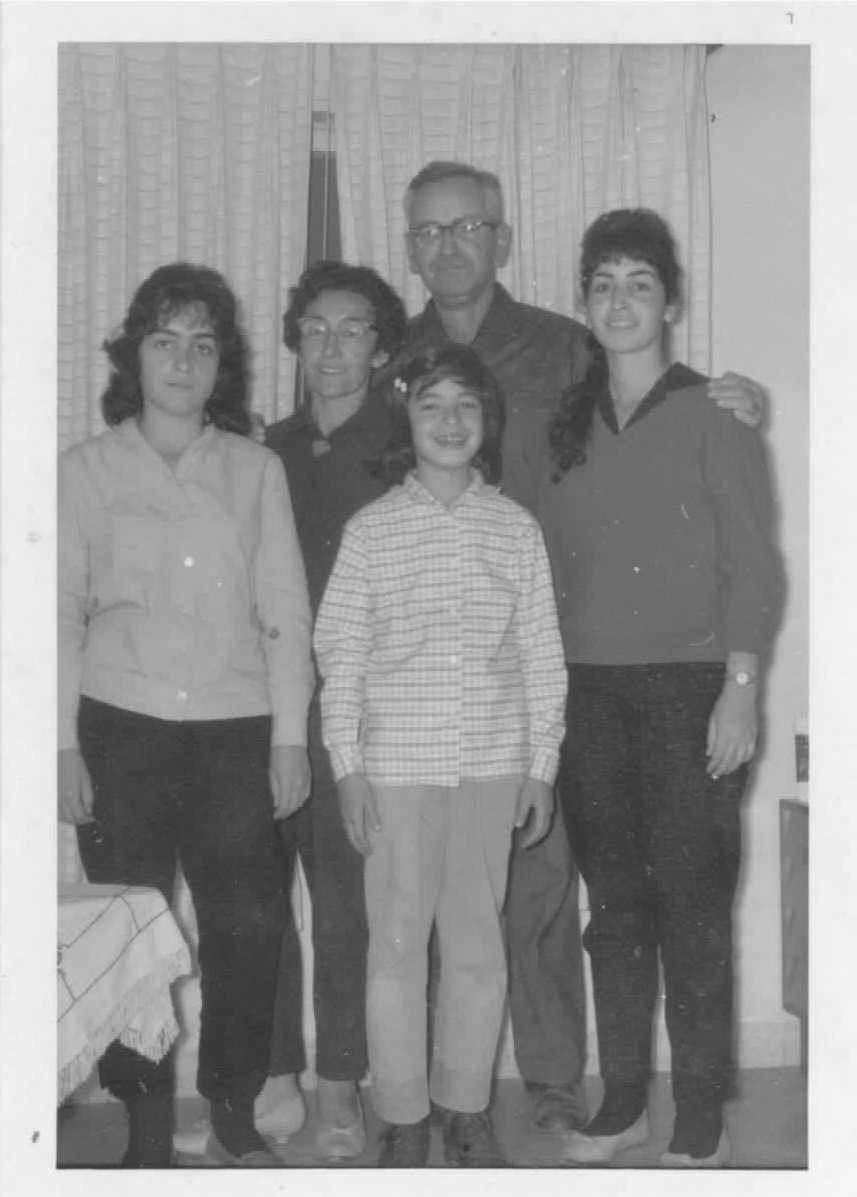
משפחת שפירא: בנימין, עמליה, נינה, דורית ורוני / The Shapira family: Binyamin, Amalya, Nina, Dorit and Roney
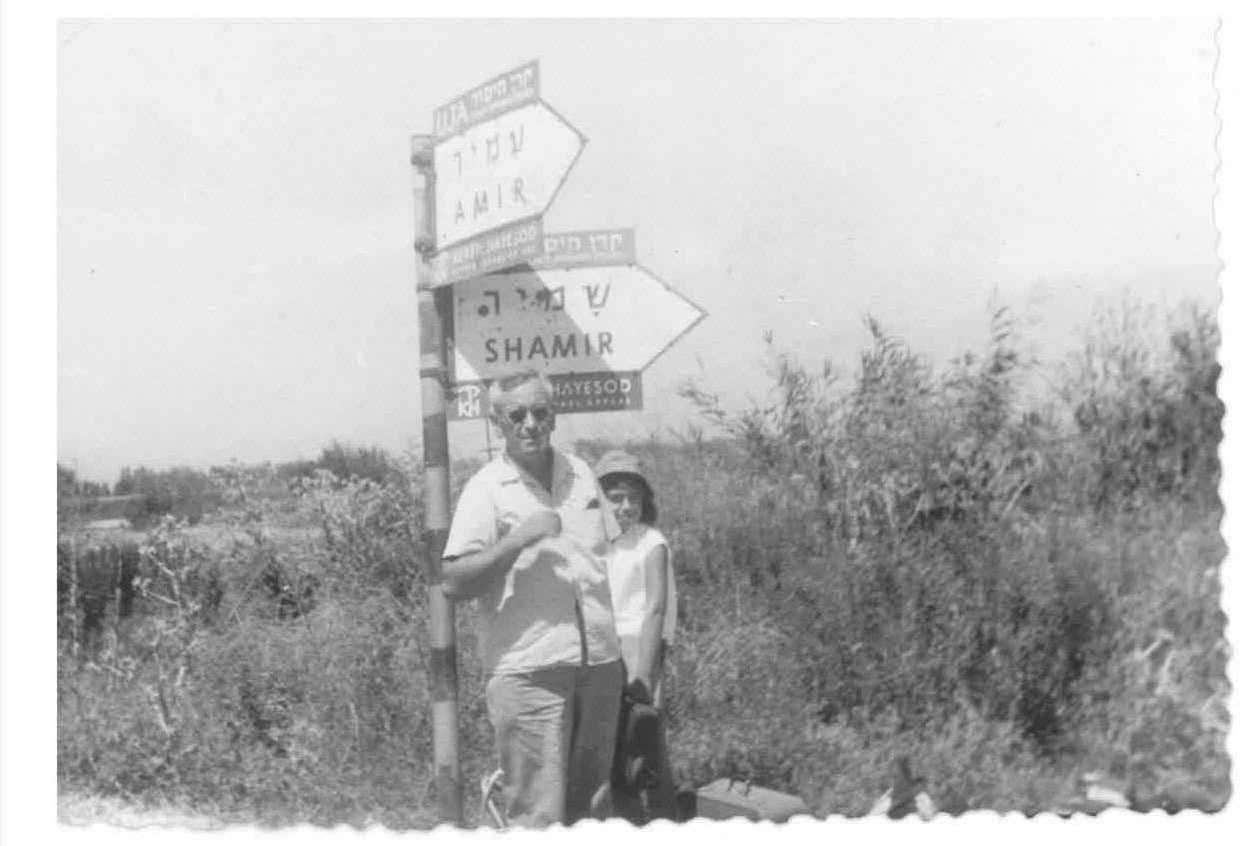
בנימין בכניסה לקיבוץ עמיר / Binyamin in the enterence to Kibbutz Amir
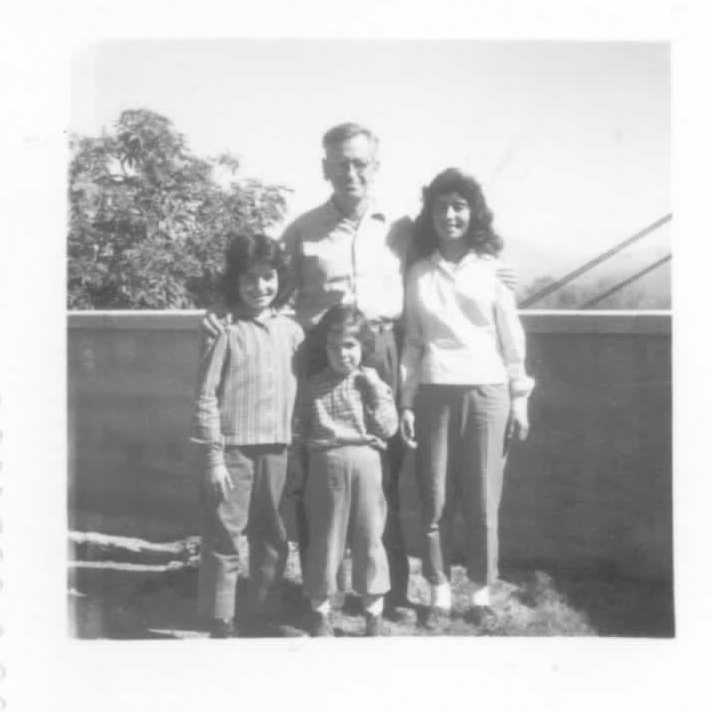
בנימין ובנותיו / Binyamin and his daughters
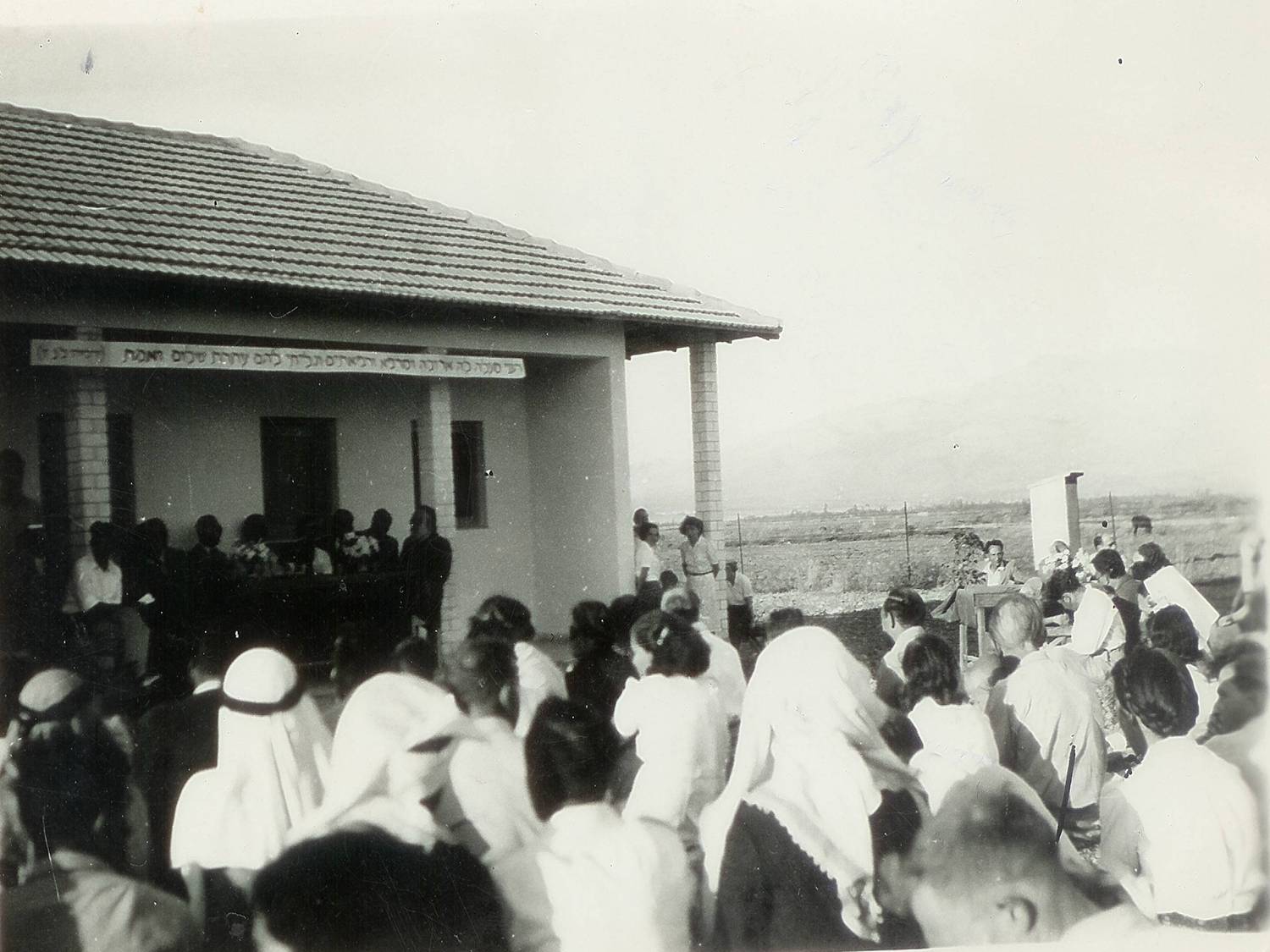
טקס חנוכת מרפאה יהודית-ערבית בקיבוץ עמיר // Grand opening ceremony for the Jewish-Arab clinic in Kibbutz Amir


